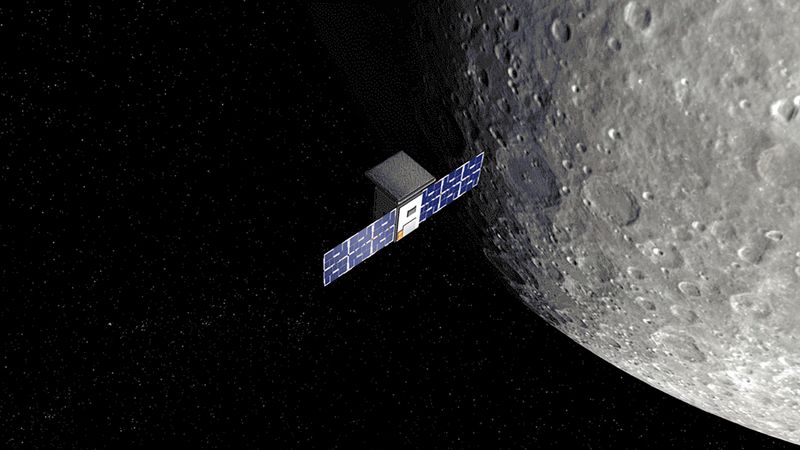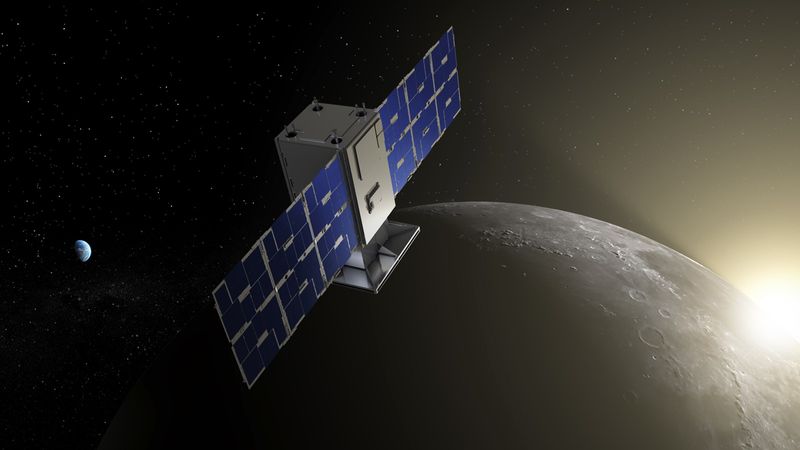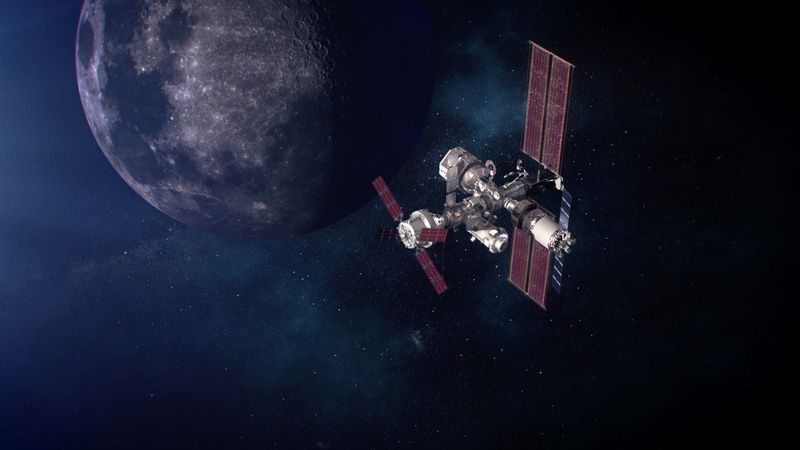
A deep space radio built by the Space Dynamics Laboratory is operating successfully onboard a NASA CubeSat technology demonstration mission to support Gateway, a vital component of NASA's Artemis program. (Illustration Credit: NASA/Daniel Rutter)
A deep-space radio built by Utah State University’s Space Dynamics Laboratory is operating successfully onboard a NASA CubeSat technology demonstration mission to support Gateway, a vital component of NASA’s Artemis program. The Cislunar Autonomous Positioning System Technology Operations and Navigation Experiment, or CAPSTONE, spacecraft entered a lunar orbit following a final insertion maneuver at 5:39 p.m. MDT on Nov. 13, 2022.
CAPSTONE becomes the first CubeSat to orbit Earth’s moon. The CAPSTONE mission is owned and operated by Advanced Space for NASA.
The SDL-built Iris Radio onboard CAPSTONE carries critical information between the satellite and operators on Earth. The Iris Radio is a software-defined telecommunications subsystem designed specifically for orbits of altitudes greater than 1,500 kilometers above Earth. SDL designed and manufactured the CAPSTONE Iris Radio to perform in the extreme temperatures and radiation environment of lunar orbit.
According to Tim Neilsen, SDL’s CAPSTONE program manager, “Preliminary telemetry received from the spacecraft following its insertion into a lunar orbit indicates that the Iris Radio is healthy and operating nominally.”
There is a lot riding on this small spacecraft that measures approximately 24 centimeters by 24 centimeters by 36 centimeters. Close to the size of a microwave oven and weighing about 25 kilograms, the CAPSTONE CubeSat is a pathfinder mission for the Lunar Gateway. Gateway is a Moon-orbiting outpost that is part of NASA’s Artemis program. CAPSTONE’s mission is to reduce risk for future spacecraft by validating new navigation technologies and verifying the dynamics of its unique quasi-stable, 3-body orbit, which keeps the spacecraft at a precise balancing point in the gravities of Earth and the Moon.
When operational, Gateway will provide critical support for humankind’s long-term return to the lunar surface and will be a staging point for deep space exploration. The solar electric propulsion spacecraft will include a Habitation and Logistics Outpost, known as HALO, that will be the initial crew cabin for astronauts visiting Gateway. Gateway will also support deep space logistics to supply astronauts as they set foot again on the Moon.
“The significant increase in small satellites such as CAPSTONE being used for deep space missions necessitates robust and reliable communications systems like the Iris Radio, which can transmit data to NASA’s Deep Space Network and other international ground networks,” Neilsen said. “The CAPSTONE Iris Radio will also perform ranging functions to help the spacecraft navigate around its new orbit. SDL builds and tests Iris Radio technology in our NASA-certified facilities, and we are proud to support this important pathfinder mission for the Lunar Gateway and Artemis program.”
NASA’s Jet Propulsion Laboratory created the Iris Radio’s initial design and transitioned further development and manufacturing to SDL in 2016. JPL named the radio after the Greek mythological goddess Iris, daughter of Thaumas and Electra and messenger of the gods.
Since 1959, SDL has been solving the technical challenges faced by the military, science community, and industry and supports NASA’s mission to drive advances in science, technology, aeronautics, and space exploration to enhance knowledge, education, innovation, economic vitality, and stewardship of Earth. SDL is a research laboratory headquartered in North Logan, UT, and has offices in Albuquerque, NM; Colorado Springs, CO; Dayton, OH; Houston, TX; Huntsville, AL; Los Angeles, CA; Stafford, VA; and Washington, DC. For more information, visit www.sdl.usu.edu.


Contact
- SDL Public Relations
- (435) 713-3054
- pr@sdl.usu.edu